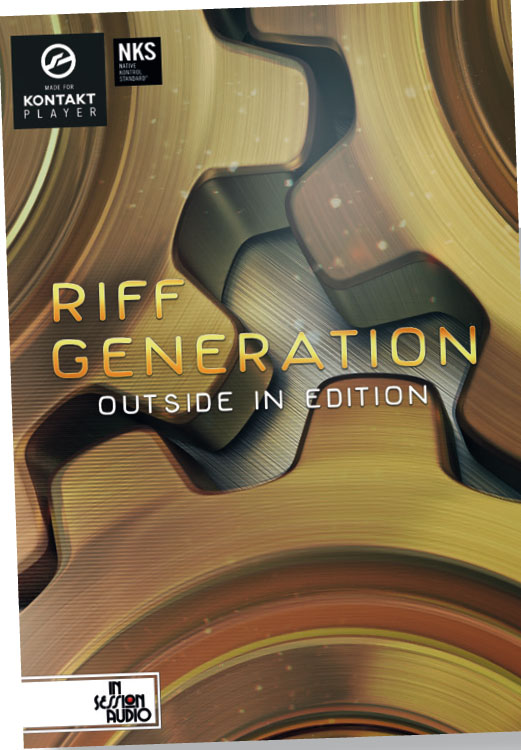

Pattern generations make the software easy to navigate
After trying Session Audio's excellent Shimmer, Shake, Strike sound library, which I found to be very useful for adding small percussion sounds such as shakers and tambourines, I was excited to try out their latest offering. In the case of Riff Generation, riffs and musical patterns are generated while still allowing the user complete control over the process.
The programme is built around 255 computer-derived synth sounds that vary from extremely mellow sounds to much more aggressive textures. There are also a wide range of sounds, including percussive or plucked sounds and more gentle strings and wind textures. With over 320 presets within the basic library, you can quickly edit and alter any of these riffs and then save them with a new name for future use. The presets are grouped by their default tempo, but the instrument will always sync to your DAW's master tempo.
Riff Generation Outside in Edition is a more recent product, although the overall operation is the same. The reason for the ‘Outside In’ name is because all the sounds are made outside of a computer, with 74 of the 234 sample sets being acoustic and electric instruments. The acoustic sounds include xylophones, guitars, chimes, bells and pianos. The other sounds are taken from hardware synths and effects and there is absolutely no overlap of sounds between either version of the programme.
Creative and fun
Both libraries operate in the free Kontakt Player, however Outside In does require the latest version. The interface is attractive and clearly laid out making the software easy to navigate.
The user starts by choosing a preset that suits the tempo or mood of their song and then setting the key and scale. The scale choices include major, minor and all the common modes. It also includes many others including the major and minor blues and pentatonics. In turn, the patterns generated by the software will alter depending on the settings selected.
You can create patterns of up to 256 steps with pitch intervals that can be freely altered – by clicking the big ‘Generate’ button it will change all the settings and produce an entirely different pattern. Alternatively, ‘cog wheel’ buttons alter individual elements such as pitch, pattern or sounds. You can also lock patches so that parts of the sound remain the same, while others are regenerated.
The resulting scales and arpeggios are very effective and can range from calm and slow to complex and rhythmic, depending on your settings.
There are lots of other controls to adjust the mix and sound of your riffs. You can easily alter the panning or vary the volume or velocity and can use up to five different sounds within your pattern. You can also add a cool stutter effect or sudden bursts of reverb that would be very difficult to produce while playing. The software comes complete with a set of effects such as high and low-pass filters, modulation, EQ, delay and reverb, adding even more audio possibilities. Once you have a pattern adjusted to your liking, playing a MIDI note will set it in motion. When you then move to a different MIDI note, the software will move the pattern to fit.
Closing thoughts
It is great fun to operate the settings and hear the rhythmic, hypnotic patterns being created automatically. You can either allow the software to create patterns using the presets or you can alter them to your own needs and save them for future use. Overall, I preferred the sound landscape of the newer Outside in Edition, but both packages include a huge palette of sounds.
The musical possibilities of Riff Generation and Riff Generation: Outside in Edition are numerous, and I can see them being used in dance and electronic music production, or even providing textures and patterns for film and media music. The range of possibilities make the program very sophisticated, but the interface invites experimentation. This means that users can have fun without too much prior knowledge, while more advanced tech students are still able to stretch and challenge themselves, delving into endless creative possibilities.
Overall these programs have been designed to produce vibrant patterns and should offer a boost to anyone's creativity.
To find out more about Riff Generation and Riff Generation: Outside in Edition, visit www.insessionaudio.com








